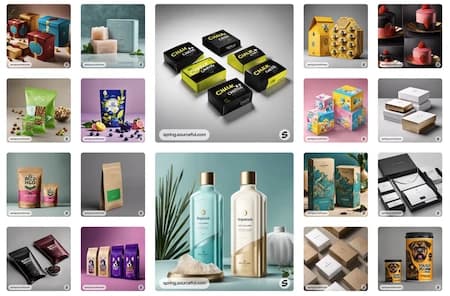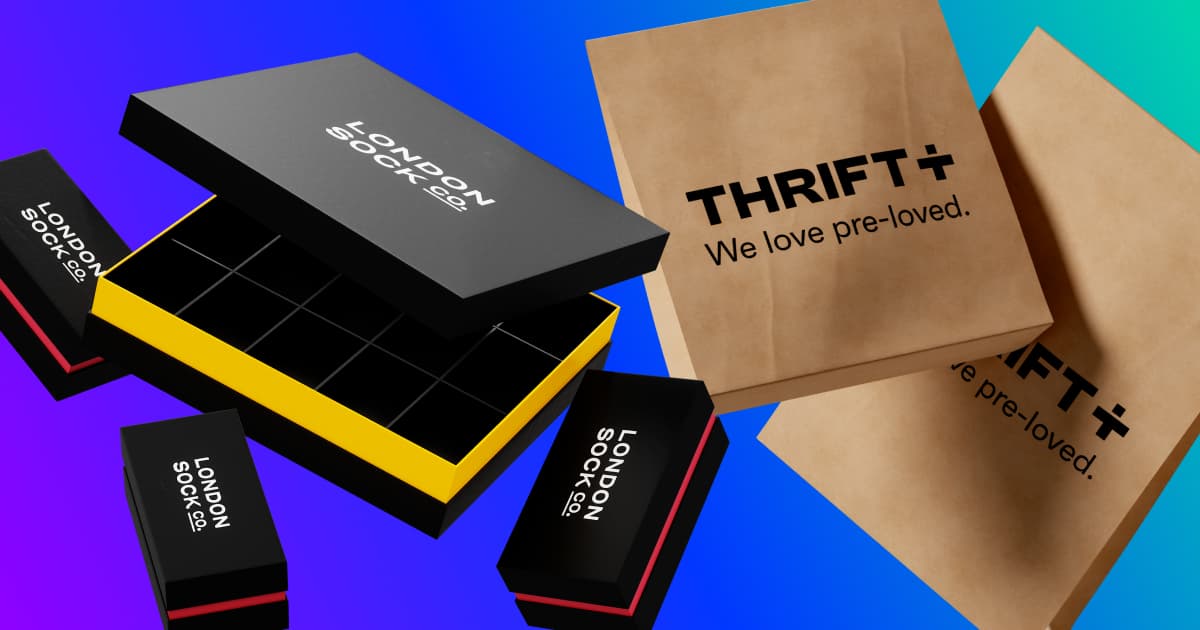Blog Post4 essential factors to create the perfect packaging for your brand
- Design
- Innovation
Clare AndertonNovember 30, 2021 - 5 min read

Your brand’s packaging has many roles – it has to protect your product, communicate your brand, comply with any regulations and be easy to dispose of. The material you choose plays a massive part in this — that's why it's important to get it right.
Here are four essential factors to perfect your packaging:
- Prioritise durable materials
- Choose sustainable materials
- Understand the material cost
- Work with a reputable supplier
1. Prioritise durable materials
The main purpose of your packaging is to protect your product. And using durable materials will help to do this. Two strong examples of this are corrugated cardboard and kraft paper.
- Corrugated cardboard is a great material for providing both strength and durability. In the middle of corrugated cardboard is fluting, a wavy layer of paper which makes the corrugated strong and rigid. There are different types of fluting, which range in thickness and strength to best suit your packaging needs.
- Kraft paper is one of the strongest packaging papers because it's made by the sulphate pulping process. This removes most of the lignin (a complex chemical compound) present in wood, which increases the paper's strength. Kraft paper can be found in packaging like mailer boxes and paper mailer bags, or as a material for packaging accessories like stickers and tape.
If you're unsure about which material to choose, order samples. You can then test these out for both quality and durability.
2. Choose sustainable materials
Today, sustainability is a key factor in packaging. Along with being a growing focus for governments, it's also a top priority for consumers. Choosing eco-friendly packaging materials can help your business lower its carbon footprint, promote sustainable brand values and reach sustainability targets.
70%_ of consumers today identify as environmentally-aware._
To choose the best sustainable material for your business, you need to consider your product. Compostable materials, for example, work well for food products because they're non-toxic and won't contaminate the food. They do, however, have a short shelf life and so are best suited for fresh food products or takeaway packaging where food is consumed instantly.
For long shelf life products, a material like glass may work better. Whilst glass is more resource-intensive to produce, it can be recycled multiple times without deteriorating. Or it can be reused as part of a refillable solution. It's important to understand the trade-offs between different materials before you make a decision on which to choose.
3. Understand the material cost
The cost of your packaging material should consider both price and environmental impact. Traditional materials such as plastic might be cheaper and more widely available, but they're subject to taxes like the new Plastic Packaging Tax. They can also be more difficult to dispose of correctly and most plastic ends up in landfill or our oceans.
This is where choosing sustainable materials can be an advantage. Although more expensive, sustainable materials generally use renewable or recycled materials which complies with new green regulations and reduces waste. They’re also often lighter and thinner than traditional materials. This means you have an overall lower cost on materials per unit, reduced transport and shipping costs, and a lower carbon footprint. That's why sustainable materials can be more cost-effective in the long run.
4. Work with a reputable supplier
Suppliers provide the materials for your packaging, so it’s important to ensure you’re working with a reputable, trustworthy one. A good supplier will be able to find a manufacturer to meet your demands, provide you with alternate options when needed and ensure the materials you choose follow regulations.
If you're trying to source a niche material, you can partner with a sourcing specialist. When Blue Elvin, a women's sportswear brand, started designing their packaging, they knew Sourceful had the sourcing expertise and network of suppliers to help with their material requests. They were searching for stone paper, which is infinitely recyclable, to create a mailer. And for Tyvek, which is waterproof and resistant to bacteria, to create a reusable pouch. Both materials were incredibly difficult to source for an early-stage start-up with limited funds and time constraints. By partnering with Sourceful they were able to source both materials in time for their launch, with the added bonus of cutting costs by 33%.
Interested in creating the perfect packaging for your brand?








